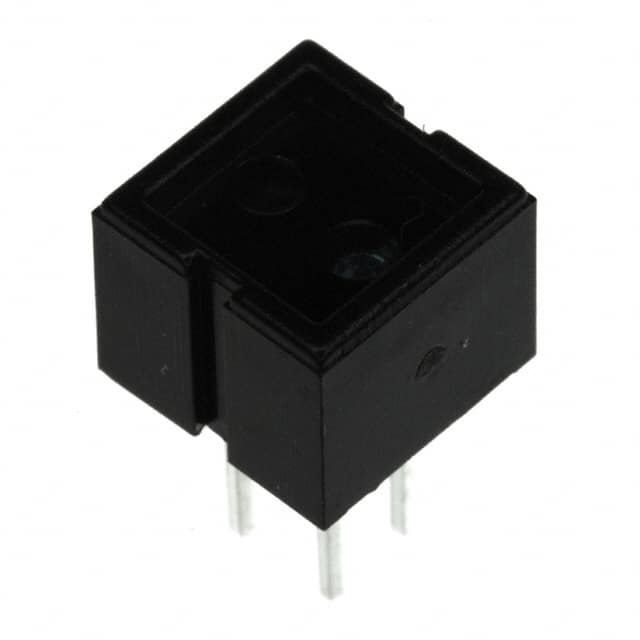CNY70 Optocoupler
Product Overview
The CNY70 is an optocoupler, also known as an opto-isolator, which falls under the category of electronic components. It is commonly used to transfer electrical signals between two isolated circuits by using light waves. The CNY70 is widely utilized in various applications due to its unique characteristics, packaging, and essential features.
Category
Electronic Components
Use
The CNY70 optocoupler is used to isolate and transfer electrical signals between two separate circuits, ensuring electrical safety and signal integrity.
Characteristics
- Optically coupled input and output
- High isolation voltage
- Compact package
- Reliable performance
Package
The CNY70 is typically available in a small, 6-pin DIP (Dual Inline Package) or SMD (Surface Mount Device) package.
Essence
The essence of the CNY70 lies in its ability to provide electrical isolation and signal transfer through the use of light waves, ensuring safe and reliable operation of connected circuits.
Packaging/Quantity
The CNY70 is commonly available in reels or tubes containing multiple units, catering to the needs of various production scales.
Specifications
- Isolation Voltage: 5000 Vrms
- Collector-Emitter Voltage: 70 V
- Forward Current: 60 mA
- Operating Temperature Range: -40°C to 85°C
Detailed Pin Configuration
The CNY70 optocoupler consists of six pins arranged as follows: 1. Anode (A) 2. Cathode (K) 3. No Connection (NC) 4. Emitter (E) 5. Collector (C) 6. Base (B)
Functional Features
The CNY70 optocoupler offers the following functional features: - High isolation voltage for enhanced safety - Fast response time - Low power consumption - Wide operating temperature range
Advantages and Disadvantages
Advantages
- Electrical isolation between input and output circuits
- Compact size
- Wide operating temperature range
- Low power consumption
Disadvantages
- Limited maximum collector-emitter voltage
- Sensitivity to ambient light
Working Principles
The CNY70 operates based on the principle of optical coupling, where the input signal is converted into light by the LED (Light Emitting Diode) and then received and converted back into an electrical signal by the phototransistor. This ensures that the input and output circuits are electrically isolated while allowing signal transmission.
Detailed Application Field Plans
The CNY70 optocoupler finds extensive application in various fields, including but not limited to: - Industrial automation - Power supply systems - Motor control - Signal isolation - Data communication
Detailed and Complete Alternative Models
Some alternative models to the CNY70 optocoupler include: - PC817 - H11AA1 - MOC3021
In conclusion, the CNY70 optocoupler serves as a crucial component in electronic circuits, providing electrical isolation and signal transfer capabilities. Its compact size, high isolation voltage, and wide application range make it a versatile choice for numerous electronic designs.
Word Count: 472
Lista 10 Vanliga frågor och svar relaterade till tillämpningen av CNY70 i tekniska lösningar
What is a CNY70 sensor?
- The CNY70 is a reflective optical sensor that consists of an infrared emitter and phototransistor, used for detecting the presence or absence of an object.
How does the CNY70 sensor work?
- The infrared emitter emits light, which is then reflected off an object and detected by the phototransistor. The sensor outputs a signal based on the amount of reflected light, indicating the presence or absence of the object.
What are the typical applications of the CNY70 sensor?
- The CNY70 sensor is commonly used in applications such as line following robots, edge detection in printers, paper detection in printers, and object detection in industrial automation.
What is the operating voltage range of the CNY70 sensor?
- The CNY70 sensor typically operates within a voltage range of 4.5V to 5.5V.
How can I interface the CNY70 sensor with a microcontroller?
- The CNY70 sensor can be interfaced with a microcontroller using digital input/output pins to receive and process the sensor's output signal.
What is the sensing distance of the CNY70 sensor?
- The sensing distance of the CNY70 sensor is typically around 0.2mm to 15mm, depending on the reflectivity of the object being detected.
Can the CNY70 sensor detect transparent or shiny objects?
- The CNY70 sensor may have difficulty detecting transparent or shiny objects due to the nature of the reflection of infrared light. Special considerations or modifications may be needed for such cases.
What are the advantages of using the CNY70 sensor?
- The CNY70 sensor offers a compact design, low power consumption, and reliable object detection capabilities, making it suitable for various technical solutions.
Are there any limitations to consider when using the CNY70 sensor?
- One limitation to consider is the sensitivity to ambient light, which may require shielding or filtering to ensure accurate detection in brightly lit environments.
Where can I find resources for integrating the CNY70 sensor into my technical solution?
- Resources such as datasheets, application notes, and example circuits for the CNY70 sensor can be found on the manufacturer's website or through electronics component distributors.


